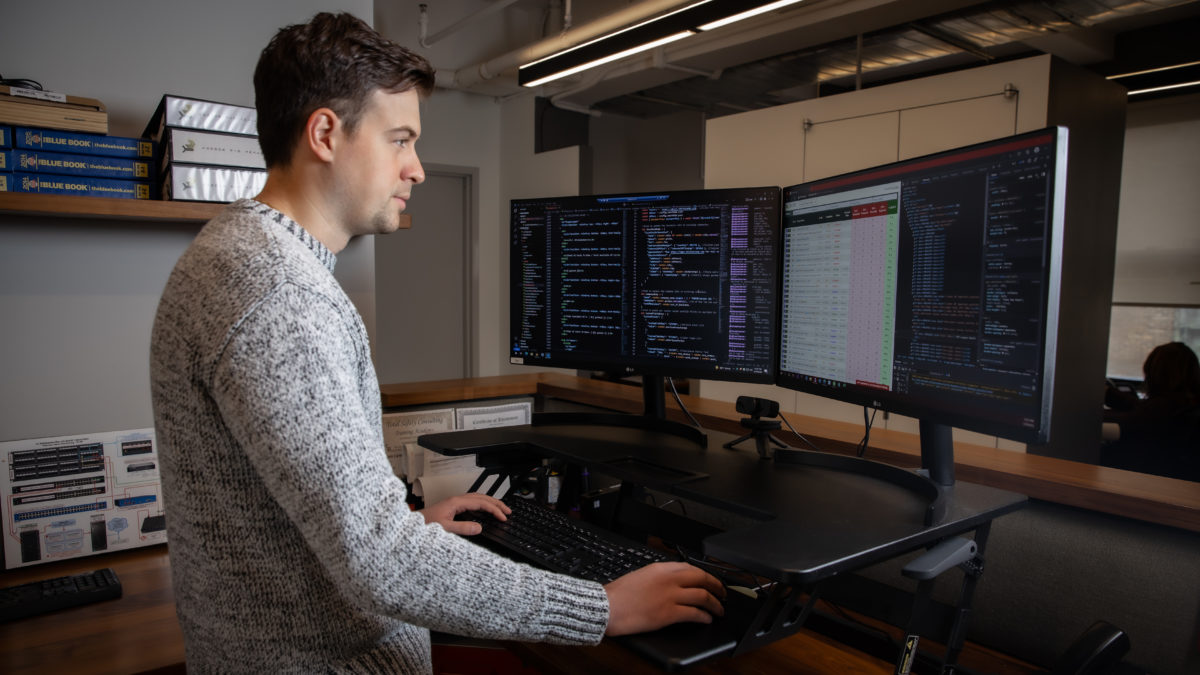Our Director of Communications, Andrew Knox, recently had a quick conversation with Talisen Construction’s Director of Vendor Management and IT Operations, Daniel Giurgiuman, about his start with Talisen, what his current role has evolved into, as well as some insights for the future of Tech in the construction industry.
Evolving Impact
Daniel began working at Talisen Construction shortly after earning his Bachelor’s in Mechanical Engineering from NYU’s Tandon School of Engineering in Brooklyn. He was initially involved in Bid Coordination and Vendor Management, but he soon took on more elevated responsibilities, handling the company’s IT operations, including internal software development and integration, research, and analytics.
Over the past six years with Talisen, Daniel’s favorite assignment has been the creation and evolution of the company’s internal vendor management platform:
“There’s been quite a few [assignments] over the years,” said Giurgiuman, “and they seem to get harder as you go along, but I think the biggest one was our internal vendor management platform. It allows us to do a lot of cool, custom data tracking and analytics, and helps us make sure our pre-qualification process and vendor-matching process is done on our terms.”
Flexibility Moving Forward
While other software or systems may have certain limitations and lack flexibility, Daniel’s scratch-built applications provide the company with a platform that has seen constant upgrading and optimization since its initial build. Its versatility allows for seamless integration with all of the other systems that the company uses and really centralizes the team’s most important tools, data, and information in one concise package.
Even with the potential of this incredibly flexible platform, Talisen’s Project Managers still benefit from industry-standard tools such as Procore for project optimization and SmartBid for takeoff and bidding. These tools play major roles in Talisen’s workflow due to the nature of our business model – with the Project Manager owning the process from concept through close out.
One challenge in the construction industry is the abundance of software that all satisfy different needs as a result of the recent boom in construction technology. With so many different options, it’s important for companies to minimize redundancy and find a way to consolidate all of the most important features, which is a challenge that Daniel has spearheaded.
People-First Innovation
He’s also at the forefront of product adoption and integration:
“Implementing new technologies is a forever cycle,” said Giurgiuman, stating that the company migrates from one platform to another quite frequently, rolling out “new software or suites about every 12 to 18 months.”
With such a constant state of migration, it’s important to not only get the decision-makers invested, but to really include those that are going to be using these products on a daily basis. Creating that inclusive environment, giving more people access to decisions that impact the company’s day-to-day success will generate the “buy-in” necessary for the company to continue to grow.
If you’d like to learn more about new, emerging technology in the construction and real estate industry, please read this article or reach out to us!
If you’d like to listen to the full conversation with Daniel, click on the Play button below:
Podcast: Play in new window | Download
